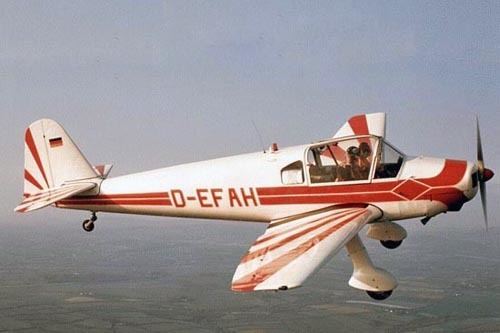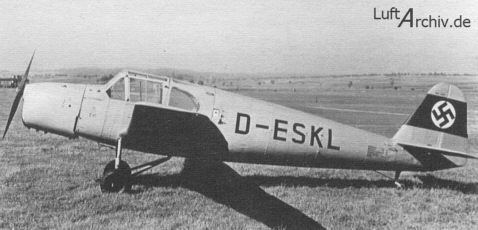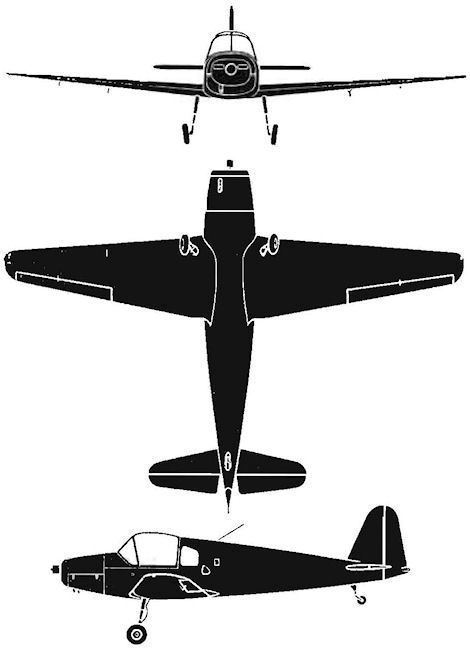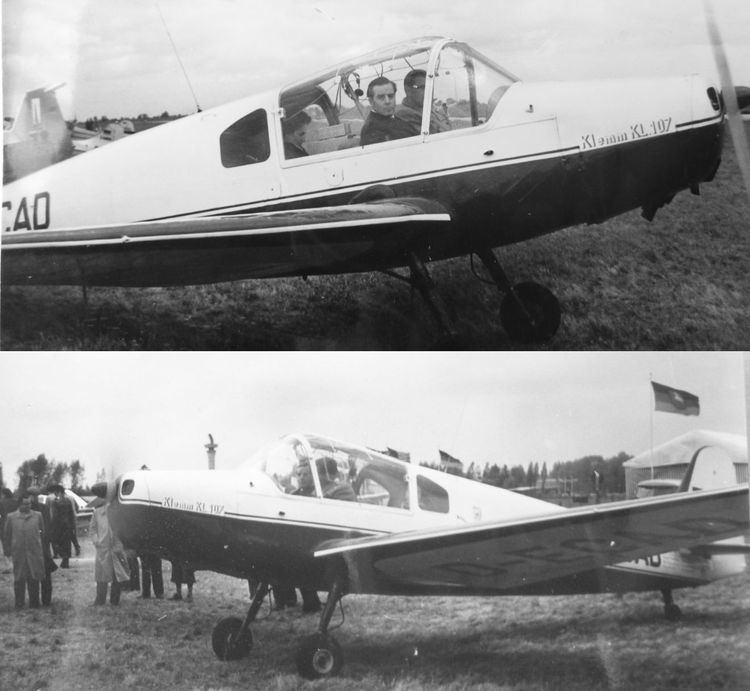Top speed 190 km/h Length 8.16 m | Wingspan 11 m | |
 | ||
Focke wulf fw 44 stieglitz klemm kl 107 gr nten von edmk kempten durach fliegerwerft e v 2013
The Klemm Kl 107 was a two-seat light aircraft developed in Germany in 1940. It was a conventional low-wing cantilever monoplane of wooden construction with fixed tailwheel undercarriage. Wartime production totalled only five prototypes and some 20 production machines before the Klemm factory was destroyed by Allied bombing. Following World War II and the lifting of aviation restrictions on Germany, production recommenced in 1955 with a modernised version, the Kl 107B, of which Klemm built a small series before selling all rights to the design to Bölkow. This firm further revised the design and built it as the Kl 107C before using it as the basis for their own Bo 207.
Contents
- Focke wulf fw 44 stieglitz klemm kl 107 gr nten von edmk kempten durach fliegerwerft e v 2013
- Klemm kl 107 flug eutingen nach hohenzollern
- Development
- Variants
- Specifications Kl 107A
- References

Klemm kl 107 flug eutingen nach hohenzollern
Development

The Kl 107 was a development from earlier Klemm designs and was a single-engined two-seat low-wing monoplane with a conventional landing gear. The first prototype registered D-EXKL first flew in early 1940 powered by a 105 hp Hirth HM500A-1 engine. Seven prototypes were built at Boblingen in 1940 and 1941 as a private venture but only six had flown by the time the project was stopped by the war.

After the war Hans Klemm Flugzeugbau joined forces with a small engineering firm Bolkow Entwicklungen as a joint-venture to further develop the Kl 107 design. The new prototype, registered D-ECAD, was built at Nabern and first flew at Stuggart Airport on 4 September 1956. Originally flown as a Kl 107 with a Continental C90-12F engine, it was modified as a Kl 107A and then it was re-engined in 1957 with a Lycoming O-320-A2A engine and redesignated Kl 107B. It was exhibited at the 1957 Paris Air Show.

A production run of 25 aircraft were then built in 1958 and 1959. In 1959 a Kl 107C variant with a modified cabin was flown and production continued of this variant until the last and 54th post-war aircraft was flown on 27 September 1961. A four-seat variant was developed as the BO 207.
Variants

Specifications (Kl 107A)
General characteristics

Performance
